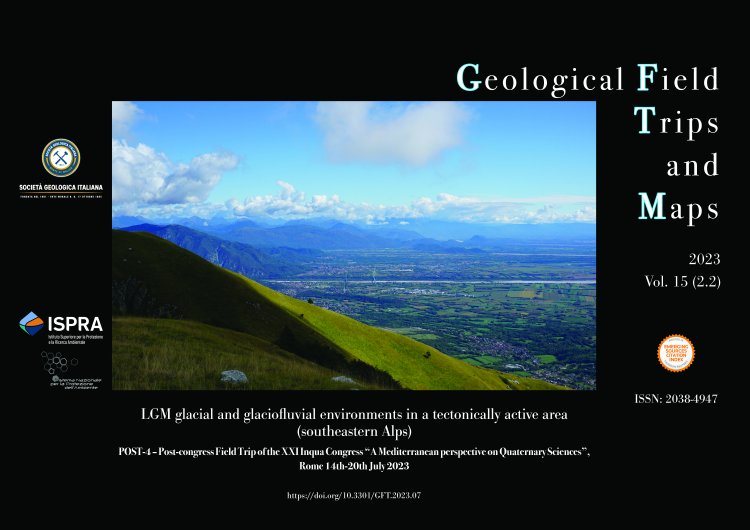
Volume 15 (2.2)/2023
LGM glacial and glaciofluvial environments in a tectonically active area (southeastern Alps)
POST-4 – Post-congress Field Trip of the XXI Inqua Congress "A Mediterranean perspective on Quaternary Sciences", Rome 14th-20th July 2023
DOI: https://doi.org/10.3301/GFT.2023.07 - Pages: 1-50
Giovanni Monegato1, Alessandro Fontana2, Paolo Mozzi2, Maria Eliana Poli3, Giulia Patricelli3, Lukas Rettig2 & Sandro Rossato1
1National Research Council, Institute of Geosciences and Earth Resources, Padova, Italy.
2University of Padova, Department of Geosciences, Padova, Italy.
3University of Udine, Department of Agricultural, Food, Environmental and Animal Sciences, Udine, Italy.
2University of Padova, Department of Geosciences, Padova, Italy.
3University of Udine, Department of Agricultural, Food, Environmental and Animal Sciences, Udine, Italy.
Abstract
The three-day field trip takes place in the eastern Veneto and Friuli regions, in north-eastern Italy, and it examines the tectono-sedimentary evolution of some of the major river systems of the southeastern Alps in Italy. The evolution of these rivers (Piave, Cellina, Meduna, Arzino and Tagliamento) was strongly influenced by Alpine glaciations and by the ongoing compressive and transpressive deformation of the thrust systems at the front of the eastern Southern Alps, the Alpine sector with the highest deformation rates of continental Europe. During the first day the focus is on the Piave system, the different lobes that interested the palaeoglacier during the Last Glacial Maximum and the activity of the Montello and the Bassano-Vittorio Veneto thrusts. The second day is devoted to the Monte Cavallo area, from the foothills, characterised by late Quaternary activity and important prehistoric sites, to the Piancavallo plateau, where local palaeoglacier reconstruction was made. In the afternoon the trip moves to Meduno, for visiting the tectonic terraces related to the activity of the Maniago-Meduno Thrust. The third day focuses on the Tagliamento end moraine system and outwash plain, with the view of the outstanding sites of the Aonedis fluvial scarp and Pozzuolo tectonic terrace.
Keywords
